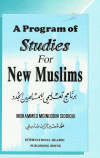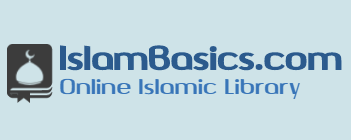A program Of Studies For new Muslims

PART VI
VI: ISLAM IN NORTH AMERICA
VI-I00 THE AMERICAN SCENE
- The Bases of Western Thought and Practice
1.1 World view: the influence of Greek thought, the supremacy of human reason; the influence of Christian theology: sin, guilt and vicarious atonement. Lack of integration.
1.2 Duality, man as a tragic hero; the resultant pessimism and humanism.
1.3 Branches of Western thought. Individualism and human rights; democratic tradition; liberalism and secularism. Dialectic materialism and communism; the rights of society and state.
- American Culture
2.1 The utilitarian principle and materialism. Land and wealth as status symbols. Success and progress. Reaction among the young and its various manifestations.
2.2 Individualism. The Protestant work ethic. English elitist and the frontier experience. The industrial revolution. The loss of religious values following Christianity's encounter with science. The breakdown of the family. Alienation and isolation.
2.3 Patriotism. Loyalty to the country, to group and race. Secret organizations. Pressure groups. Ethnic loyalties. Zionism.
2.4 Free enterprise. Money makes money. Utilitarian principle; theories of optimization. Big versus small business. Upward mobility. The end (making money) justifies the means. Consumption and waste; built-in obsolescence; decline in quality in favor of quantity;
lack of respect for environment and resources; business pressure groups.
2.5 Freedoms. From what? for whom? to do what? The U.S. Constitution. Slavery. Emancipation. The development of democracy.
2.6 Work. The Protestant theology: work as a Divine norm necessary for salvation. Efficiency. Lack of personal fulfillment in present work systems. Women better the home and the labor market.
2.7 Religion. Protestantism; attitude toward other religions. Church: leader or follower? Skepticism, atheism, existentialism. How American society is inimical to faith and real religious values. Trend toward Eastern religions.
2.8 Family. Nuclear family. Parent-child relationship. Child-parent relationship in adulthood. Equality of sexes. Housework -who shall do it? Wife and mother or secretary. Birth control and abortion. Lack of religious constraints equals lack of concept of limits and concept of responsibility. Sexual chaos.
2.9 Leisure. Recreation and sports. Travel: the ever beckoning outdoors and recreation spots. Literature, theatre, music, cinema, television, art. Sports. Socializing. Drugs and alcohol.
2.10 Science, pure and applied. Technology and labor-saving machines. Is man obsolete? Medicine and public health. The immense increase in knowledge in the second half of the twentieth century. Myths we live with: man is all-powerful; no limit to his knowledge; what he cannot find out on his own is not worth knowing about; he is responsible to no one but himself.
2.11. Social sciences. Genetics and evolutionary theory: man is an animal. Sociology: religion is a response to human societal needs. Psychology: the importance of the self; how one feels is the determining factor; the discarding of common sense approaches in favor of "the experts"
approaches. Since religion is a man-made system, it can be discarded or replaced; the concept of sin and accountability are lost.
2.12 Professions. Specialization. Professionals: the new priests.
2.13 Education. Experiments with methodology. School atmosphere, the role of the school in the attitude and value-training of the youngster, the roles of the teachers and administrators. Higher education.
2.14 The American Dream. Dream or reality? Ideas versus ideologies.
VI-I0l A MUSLIM'S VIEW OF CHRISTIANITY
- Christian Theology
1.1 Man's relation to God through Christ. Trinity. Resurrection, judgment, heaven and hell.
1.2 View of man. Original sin. Vicarious atonement. "God so loved the world. .." "Being saved" through faith. Belief versus action. Abolition of Divine law of Moses. Christian virtues: celibacy, monkery. View of women.
1.3 The Qur'an's critique of the Trinity. Jesus in the Qur'an and Hadith.
1.4 The history of Christian theology from the time of Christ to the present day.
- Catholicism
2.1 The Catholic Church. Its structure and heirarchy.
2.2 The role of the church in the life of a Catholic. Infalliability of the Pope. The Sacraments. Mortal and venial sins, confession and absolution.
2.3 History of the Church. Popes and kings in the Middle Ages. Indulgences. The Inquisition. The Church and scientists. Reformation.
2.4 The influence of Islamic thought.
- Protestantism
3.1 Historical aspects: Luther, Calvin, Zwingli. The place of the Bible. Faith in the prophecies.
3.2 Dozens of denominations; what is common among them.
3.3 Social concerns: missionaries and their activities.
3.4 The Protestant ethic: liberalism, individualism, humanism, hard work, thriftiness.
3.5 Splinter groups: Mormons, Christian Scientists, Unitarians, Quakers.
- Historical Relationship Between Muslims and Christians
4.1 The Qur'anic injunctions concerning relations with People of the Book.
4.2 The Prophet's treatment of the Christians of Najran.
4.3 'Umar's document to the Christians of Eilia.
4.4 Christian subjects under various Muslim dynasties: Umayyah, 'Abbasiyyah, Umayyah of Spain, 'Uthmaniyah.
4.5 Muslim subjects under Christian rule: Spain, Czarist Russia, French, British and Dutch imperialism, Ethiopia, Philippines.
4.6 Crusades. Propaganda against Islam, the Prophet and Muslims, and its lasting effect to the present time.
4.7 Christian 'scholars' of Islam. Orientalists and their antiIslamic propaganda.
4.8 The influence of Muslim scientists and philosophers. Renaissance, Reformation, the scientific awakening, medicine and hygiene.
4.9 The interface: the essentially fixed boundaries of Christendom; Islam and Christianity in Africa, Islam in Europe, America and Australia.
VI-I02 THE ISLAMIC CALL
- The Plight of the Kafir
1.1 Varieties of kufr: Unbelief, Association, Ingratitude,Pride.
1.2 Manifestations of kufr: self-indulgence, pessimism, loss of direction and purpose, tyranny, alienation, crime.
1.3 Modern expressions of kufr,' Scientism, Secularism, Humanism, Materialism, Communism, Nationalism, Existentialism, Racism, Socialism and Capitalism.
1.4 Man against his own soul; man against man; man against nature; man against God.
1.5 The search for knowledge and truth. The expanding universe and the shrinking man. Man the unknown. Movement without progress.
- The Islamic Call
2.1 Call toward submission: belief, gratitude, humility, acknowledgement of being a creature.
2.2 Manifestations of Islam: self-discipline, hope, direction and purpose, justice, love, doing good to others.
2.3 The Islamic 'hammer:' breaking of modern idols. Islamic foundations of science, of life on this earth, of human relationships, of wealth and resources, of human ranking, of human groupings.
2.4 Man is united with his own soul, with his fellow man, with nature and with God:
2.5 Knowledge and truth. The revealed knowledge and truth. The acquisition of knowledge, revealed and learned. The ultimate goal.
- Methodology of the Islamic Call
3.1 Formation of a vanguard. Association on the basis of commitment to Islam; mutual training and education.
3.2 Formation of an association. Inviting others. Selection of active persons, and their training and education. Speakers, writers and organizers. Rules for change of leadership. Shura.
3.3 Characteristics of the association: Islamic objectives, spiritual and moral strength of its workers, Islamic limits on its activities.
3.4 Activities: spreading the message of Islam through the spoken and written word, publications, seminars, con ferences, camps, schools, Islamic centers and mosques, circles for teaching and learning, circles for dhikr and 'ibadat.
3.5 The MSA as a case study. Its formation and growth, constitution, activities. Future goals.
- Muslim Communities
4.1 Definition of a community. Association on the basis of objectives.
4.2 Elements of a community: objectives; leadership and shura; active workers; planning; finances; participation of members.
4.3 Methodology for establishing a Muslim community. Requirements: a group of Muslim families in one town, and a desire for Islamic identity. Steps: forming an association; establishing Friday prayers and fasting of Ramadan; celebrating Islamic occasions; collection of Zakat; purchasing homes in the same locality; starting businesses; Muslim professionals and workers; mosque, school and cemetery; participation' in civic affairs; representation in city, county and state governments.
VI-IO3 THE HISTORY OF ISLAM IN AMERICA
- The first Muslims inAmerica
1.1 Muslim explorers.
1.2 The Atlantic Slave Trade and Muslim Africa.
1.3 The preservation of a syncretized Muslim consciousness in Slave societies.
- The Rise of "Back to Islam" Movements
2.1 The existence of Muslims after the legal abolition of slavery.
2.2 The possible influence of Muslims on Marcus Garvey.
2.3 Noble Drew Ali and the Moorish Americans.
2.4 Elijah Muhammad and the Nation of Islam.
2.5 Fard Muhammad's role in the development of the Nation of Islam.
- Indigenous American Muslims in the Twentiety Century
3.1 Muslim organizations, centers and masjids in North America.
3.2 The World Community of Islam in the West and Wallace D. Muhammad.
3.3 National Muslim movements.
- The Impact of Immigrating Muslims on Islam inAmerica
4.1 The main source areas of immigration.
4.2 The probable reasons for immigration.
4.3 Prospects for cooperation among all the various groups.
PART VII
VII: SUPPLEMENTARY SUBJECTS
VII-IOO ARABIC I
- The alphabet.
- Common Arabic expressions used by Muslims.
- Arabic words.
- The Arabic article.
- Gender.
- Nouns and adjectives.
- Pronouns.
- Verbs: simple conjugations.
- Simple forms of broken plural.
- Special vocabulary of important words.
VI-IOI ARABIC II
- Nouns: duals and cases.
- Verbs: derivatives and their conjugations.
- Adjectives: comparatives and superlatives.
- Adverbs.
- Prepositions and their effect in sentences.
- Structure of the Arabic sentence.
- Numbers: cardinals and ordinals.
VII-I02 QUR'ANIC ARABIC
- The Qur'anic vocabulary.
- The reading ofjuzu30 with word-by-word translation
